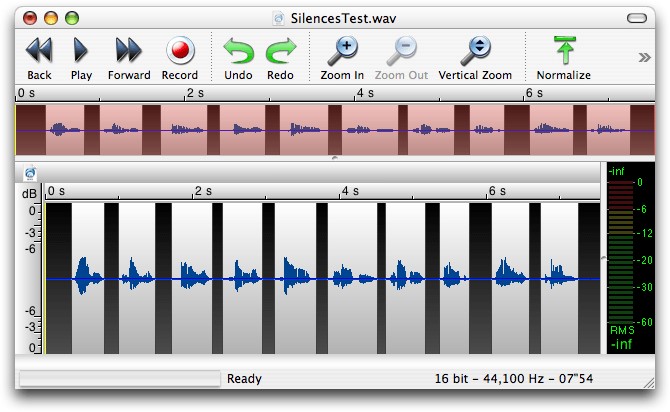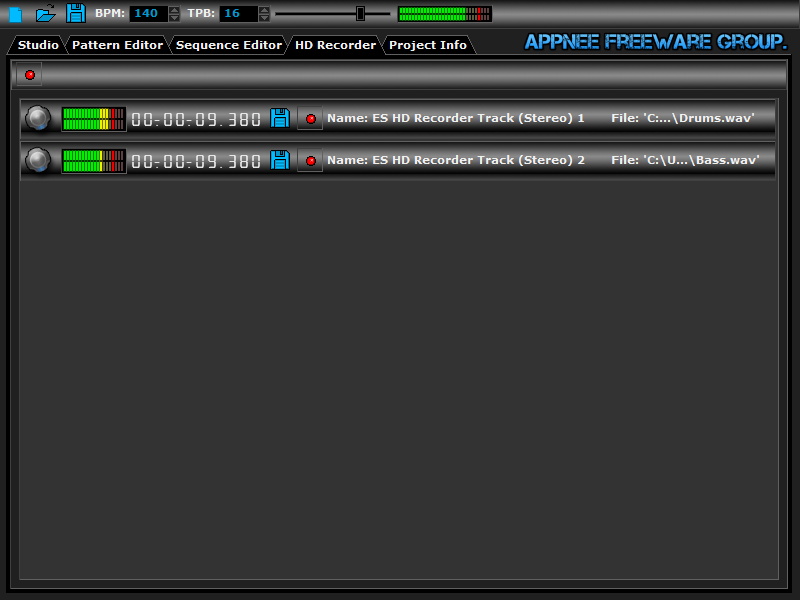

There’s actually a good reason for this, but I did promise there would be no math today… The takeaway is that past a certain point, Spectral view renders the data less precisely. But, in Spectral you actually lose detail as you increase resolution. It’s why we can easily use Twisted Wave to find the tiny click that we know is there. There is one weird thing about this way of viewing the audio – with a Waveform, as you zoom in you gain detail. Not all spectral-view-ready DAWS offer direct spectral editing. (Though it might be simpler to just get back in the booth and do it again). This enables a graphical approach similar to photo editing software, amazing for negating odd noises which ruin a perfect take.
Twistedwave echo software#
Some software (such as Izotope’s RX), allows you to directly edit sound while in Spectral mode. Spectral tools vary with different software Going only by the visuals can cause us to chase flaws which are inaudible and simply don’t matter.īut using a Spectral view can provide a quick visual reference to diagnose problems. Just as with waveforms, we still don’t want to draw huge conclusions without listening first. I forced myself to use it for several months before it became second nature and I could anticipate how things would sound from the visuals. (It depends upon how “bright” the fog is…) Spectral is a tool worth learning

Or if you see a general light “fog” when you aren’t speaking, that might indicate audible background noise. Those are the overtones of your voice.īeyond that, you may notice vertical plumes of bright where you had a sibilant “S” sound ( sibilance is broadband noise – so it has energy at most frequencies). Looking above the base vocal frequency, you may see visual “echoes” which are the harmonic components that combine to give your voice a distinctive tone. (If you record a fixed-frequency instrument like a piano, the notes will track in a level bar as the pitch won’t change).

Human voice generally varies slightly in pitch (which is another name for frequency), so it will fluctuate somewhat over time. If the spectral data is handled well (as in Izotope’s RX interface shown above), you should be able to see things like low frequency rumble (kind of a diffused “fog” at the bottom of the screen) and the “base” frequency of your voice recording. On the right is the same recording viewed with Izotope’s Spectral view. On the left is the “waveform” view which you are likely familiar with. This is the same audio file viewed through two different tools. Dark areas mean that there is no sound at that frequency. Where you see brighter colors (usually from dark orange to bright-whitish, or from deep reddish to bright yellow-white) is where the more intense frequencies live. The low frequency components of the sounds are at the bottom and the high frequency components of the sound are at the top. Rather than wave amplitude (positive and negative values centered around mid-zero point), Spectral views plot FREQUENCY in the vertical axis from low to high. the sound generally moves from left to right. Spectral view renders the frequency information to your screen. It is visually quite different, but can be a very powerful way to view your recordings. You may have noticed it or accidentally switched to that viewing mode. Perhaps you have seen this as an option in your DAW (and there are both poor and excellent implementations of it inside of various recording/editing software). However, those Waveforms do not provide any quickly usable frequency or pitch information.Īnother approach is Spectral view. When we start to work more with common editing software, this becomes second nature and we get a sense of the relative volume in our audio as it flows past. Waveforms also provide an understandable image of sound’s linear nature – everything happens in a timeline, which makes editing easier to learn. We quickly learn that the taller the wave, the louder the recording. The “peak” (the highest point) of the waveform is usually what we measure on the dB (decibel) scale. Waveforms provide a clear image of the volume. The greater the pressure, the “higher” the wave onscreen. When you start capturing your voiceover auditions or audio, you’ll fin that most of the computer-based recording software renders the audio in a similar fashion In any common recording or editing software you are likely to use, the audio shows up on your screen as a waveform.Īny time we use a microphone, we are capturing the increase and decrease in air pressure.


 0 kommentar(er)
0 kommentar(er)
